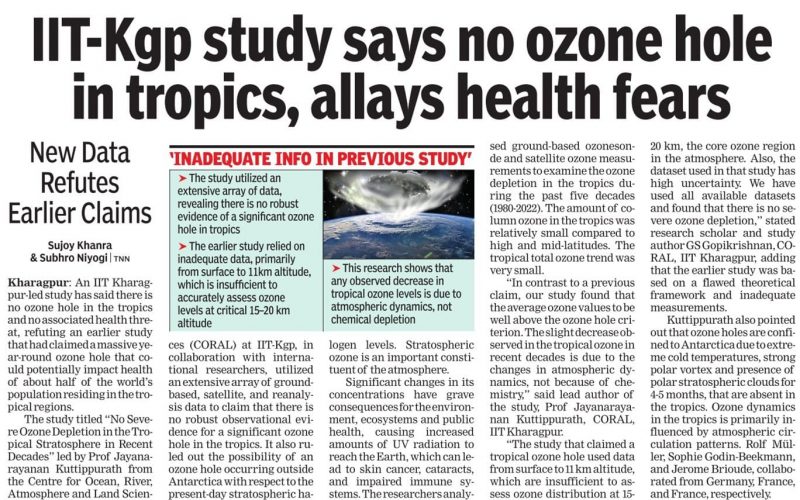
No Severe Ozone Depletion in the Tropics
A ground-breaking study led by Prof. Jayanarayanan Kuttippurath from the Centre for Ocean, River, Atmosphere and Land Sciences (CORAL) at the Indian Institute of Technology Kharagpur (IIT-Kharagpur), in collaboration with international researchers, has refuted previous claims of a severe ozone hole in the tropical stratosphere. The study provides reassurance that there is no significant ozone depletion in the tropics and no associated health threat. The recent study entitled “No Severe Ozone Depletion in the Tropical Stratosphere in Recent Decades," challenges earlier assertions of a year-round massive ozone hole in the tropics. The previous research suggested that such an ozone hole…

